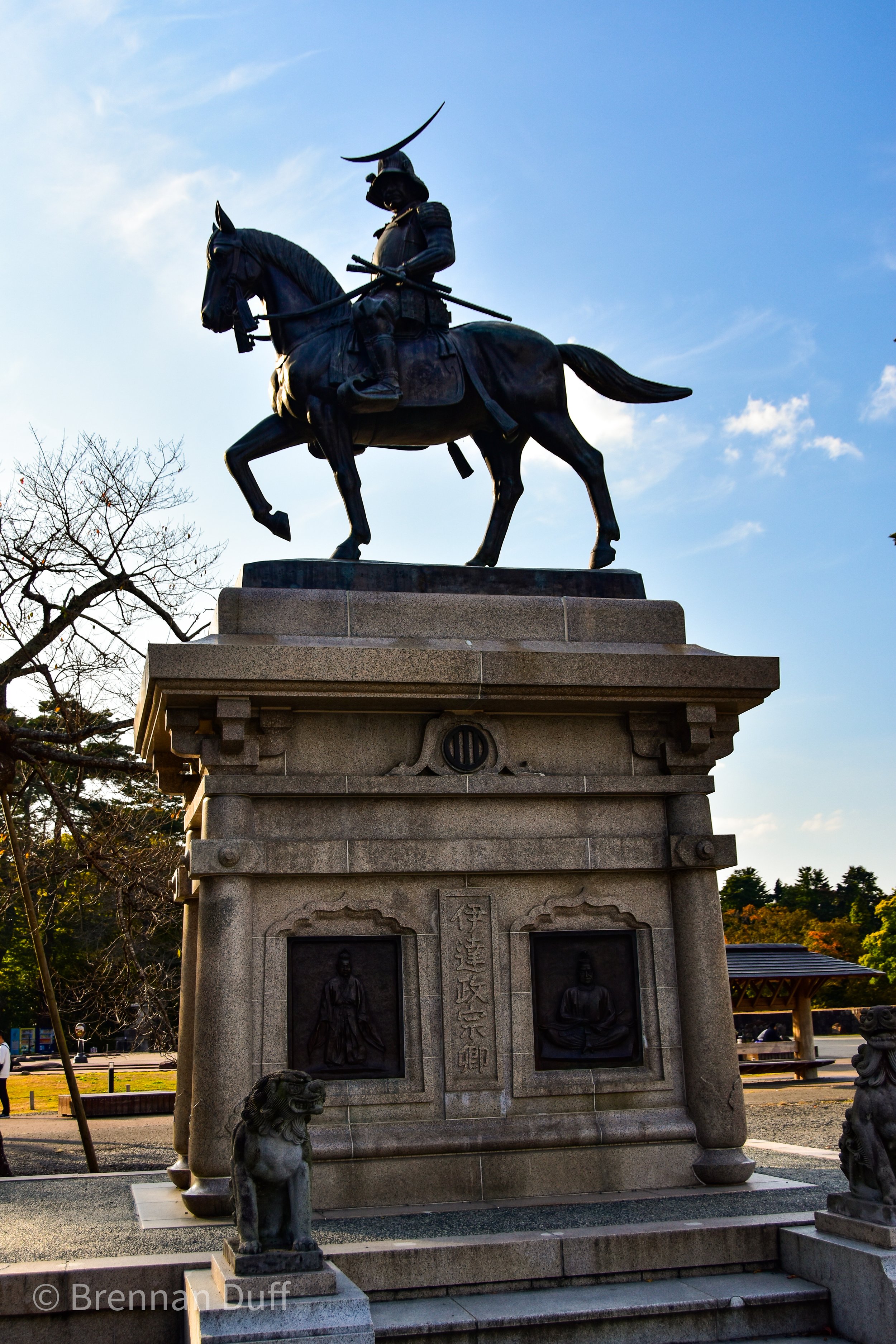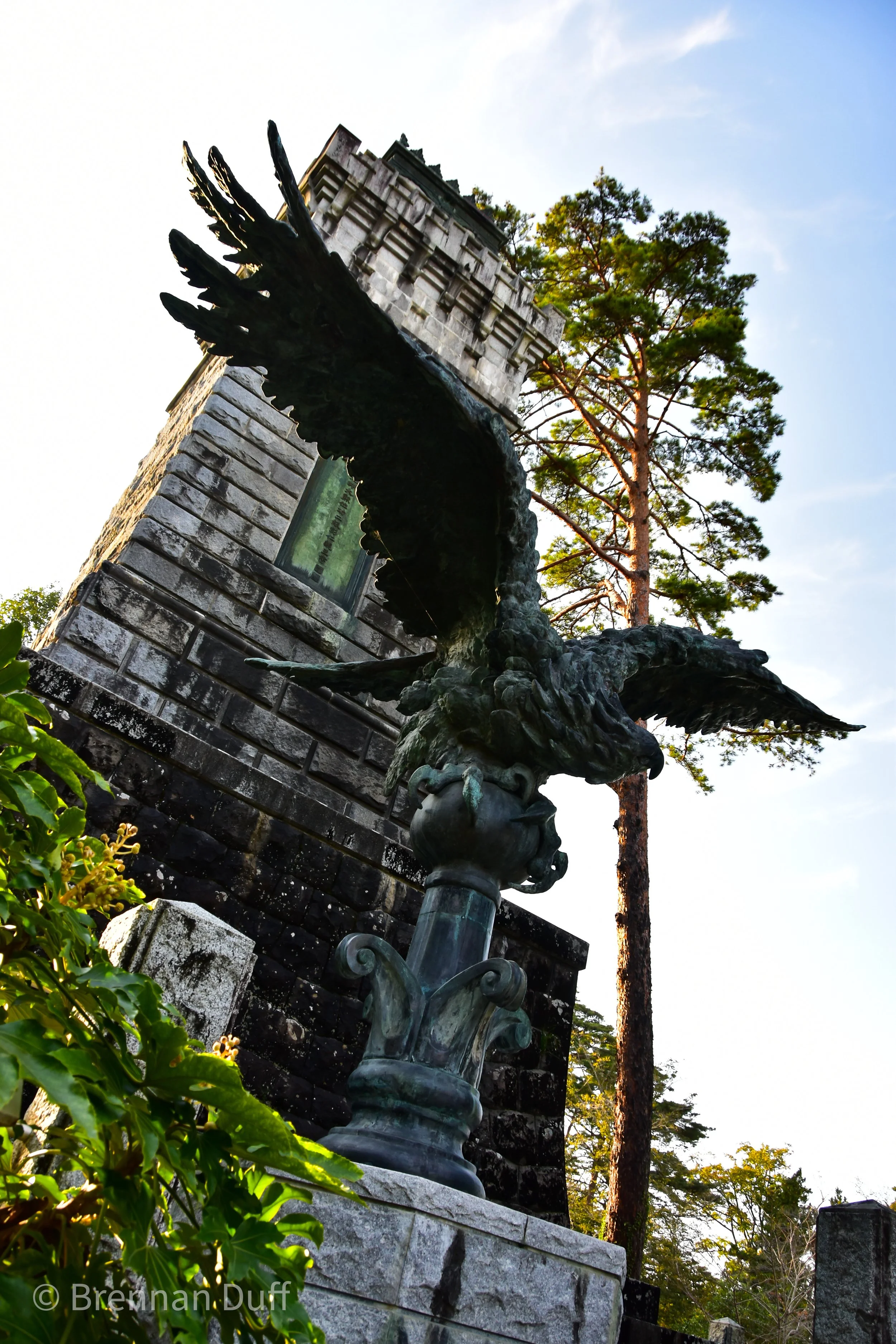August 6th, 1945 at 8:15 a.m. The Hiroshima Peace Memorial Park is essentially Hiroshima's equivalent of Central Park, but a bit more emotional. Opened to the public in 1998, the Peace Park is a monument to the fallen, and a perminant advocate for a world without nuclear weapons. As a word of warning, have some tissues handy because it's not very desensitized. The park is designed around a central axis that aligns the museum, the memorial itself, an eternal flame, and the atomic dome on the oposite shore the river. Additional memorials and sites of interest surround this axis and are very easy to access on foot. The hypocenter is not within the park but it is only a short walk around the corner.
There are several names for the atomic bomb in Japanese but it is most widely known as 原爆 (genbaku), while the blast is called ピカドン (pikadon).
Quickly, there are two parts to the bombings of Hiroshima that visitors should know or be remined of. The first part is the blast itself. People were instantly disintegrated in the closer areas while others further away faired a far more painful death. Some died of dehydration after the blast vaporized all the water both in the rivers and in the air, others died of severe burns from the intense heat of the explosion. I’m very sad to say that I am keeping many of the more horrific details to myself. The second part is the radiation poisoning, and this is the real killer which is widely overlooked because of how dramatic the blast was. People who survived the initial blast were often slowly killed in the following days, months, and years. Some people who seemed completely unharmed physically would succumb to a wide variety of illnesses which wrought destruction internally. Survivors of the bomb blasts in both Nagasaki and Hiroshima were labeled hibakusha, a person affected by the bomb. These people were discriminated against by all corners of society because it was unclear if the shadow of death that they walked with was contagious or not. In case you didn’t know, or maybe it just hasn’t occurred to you yet, but before the bombings in Japan, there was no knowledge about radiation poisoning at all. No one had ever attacked with such a force before and the fear it inspired shook a battered nation to its core. If you wish to learn more about both phases of the bomb’s effects, please visit the Peace Museum. I guarantee that it doesn’t gloss over any details.
For the visitor: 11.
If you're visiting Hiroshima and you don't go to the park then you are missing one of the great human scars. Looking at Hiroshima today it's hard to imagine it as a vast nothingness of rubble and smoke, but that's what it became one fateful August morning in 1945. The park is set up right where a bustling market place had once stood near the center of the city and across from Hiroshima Castle. The park is not particularly small, and on any given day it is full of people paying their respects and visiting the monuments, and yet no one is speaking above a whisper. Can you imagine busy Central Park at a whisper?
A word of warning before I get too much farther. I wish to discourage visitors from throwing up the peace sign when taking pictures in the park. This is one of those symbols that change in meaning between cultures, even if just slightly. I can understand that a visitor may want to throw up the peace sign as a way of saying, “Hey, let’s promote peace, honor peace, and strive for a peaceful future.” Or something along those lines. But while that gesture in the West is closely related to the idea of peace and a movement of love and tolerance in the 60’s, in Japan that gesture is associated with joy, elation, celebration, and other emphatic emotions of happiness. As a result, throwing up the peace sign while in the park is viewed by many to be a celebration that people died in a horrific and inhumane way, rather than being supportive or empathetic. Your intentions are noted and appreciated, but for the time being, please try to avoid this gesture.
Part one of any visit should probably start with the Atomic Dome. As the first part of the park accessible from the main street and street cars in Hiroshima, I am going to assume that this is the starting point for most everyone. For some reason, many people (myself included) confuse this building, calling it a hospital, but it was actually the Hiroshima Prefecture Industrial Promotion Hall. This once grand and beautiful exposition hall was near the hypocenter, so as the blastwave hit, the force came from above which made it possible for the building to stay standing. If you look at the dome itself you can see which way the hyopcenter was because the dome is esque. The hall is a haunting reminder of the desructive power of an atomic bomb. And no, the building was not rebuilt for viewing purposes, rather the building has been repaired just enough to stay standing on its own through the ware of everyday life, but no more.
Next to the dome is the memorial for conscripted children. The Pacific War took a great toll on the population of Japan, and in particular to the young male population. With a depleted workforce, children were sent to work in various factories in the city instead of going to school. Children made everything from parachutes, plane parts, and even running local infrastructure. The monument looks like a small pagoda and is surrounded by bronze reliefs of conscripted children and the jobs they would have had.
Have your tissues ready? Across the bridge is the monument to fallen children. 8:15 meant that the day was starting in Hiroshima when the bomb was dropped. People had begun work, others were preparing to leave, but many were outside, and in particular, children were on their way to school. Children of all ages passed away that day, but what became the most frightening was the radiation poisoning that killed slowly even years after the attack. One of the most well known affected children was a little girl named Sadako Sasaki, who was only 2 when the bomb was dropped. She became the most famous hibakusha (survivor of the blast) before her leukemia took her life at the age of twelve. She was told by her nurses and doctors the tale that if a person folded a thousand paper cranes, their wish would come true. So every day in the hospital she folded cranes using the paper from her medicine. I'm sure you know what her wish was. Today she is immortalized with a bronze statue in her image atop the Children's Peace Memorial holding a crane aloft. Day after day, year after year, visitors and students from schools around the world donate sets of thousands of cranes to the memorial which are placed on display in plastic boxes around the monument. If you wish to add a string of paper cranes yourself, there is often a guard on duty who will gladly place them inside for you.
To the north is a smaller area with a spectacular view of the atomic dome on the right, and to the left is a large bronze bell surrounded by lotus flowers. This is the World Peace Bell, named for the map of the world on its surface. Visitors can ring the bell throughout the day, but at night it is tied up. Just across from the Peace Bell is a large clock tower. Visitors will notice that it does not ring at any of the typical times of the day. The reason: 8:15 a.m. It only rings once a day at the time when the bomb fell from the sky.
Heading back south towards the museum, there is an earthen mound on the right side. This is a grave site functioning similarly to that of the Tomb of the Unknown Soldier in Arlington, Virginia. The blast of the bomb vaporized so many that day that many bodies could not be found. This is a spot to mourn the body. The soul on the other hand, we will get to in a minute. But this is a very important place for remembering those that were lost in the blast. The shape is similar to many Kofun period tombs which you can find all throughout western Japan, but mostly in the Kansai area.
Next make your way to the main Peace Memorial. You may notice that many people are behaving similarly to that of a shrine, and in many ways this monument is a shrine. This is where the souls of the lost reside. Beneath the overhang is a stone box looking almost like a sarcophagus, and inside is a registry of every life lost in the bombing. Many don't know that even American POWs were lost in the blast. The register is constantly updated as more people are confirmed to have been in the city when the blast went off. It’s important to note that there isn’t an exact count of how many people died in the blast because the city registry was lost with city hall. The agreed estimate of fallen is around 140,000 people, give or take a couple thousand.
Now that we’re in the central axis of the park, it’s important to note the eternal flame burning in the middle. As noted before, the central axis consists of the Atomic Dome, the Eternal Flame, the Memorial, and the Peace Museum. For information about the origin of the fire, please refer to my entry in the Shrines section tited “Ueno Toshogu”.
There are two buildings near by which I highly recommend you visit. The first is of course the museum. When I visited, the museum was undergoing rennovations so I went into an abridged version next door in their special exhibit space. The museum is home to many iconic pieces from clothing and toys, Sadako’s paper cranes, and even memos from noted political figures like President Obama, the only American President to ever visit the memorial while in office. Wax figurines depict the more grusome aspects of the bombing along with detailed explainations for the bombing timeline and associated injuries. The most haunting is the Hitokage, the Human Shadows. The Hitokage are the shadows that remained of people after the blast disintegrated their bodies. The heat of the explosion was so hot it’s best to imagine it as a miniature sun. The light bleached the surrounding stones but left the black shadow of whatever was blocking the light, in this case, people. Many of the Hitokage disappeared due to natural weathering over the following years, but the museum obtained several examples after they were cut from the surrounding stones.
The other building is the Peace Memorial Hall for Atomic Bomb Victims. This one you'll NEED tissues for. Everything inside is about recognizing the quantity of lives lost. Through murals, photo libraries, and video presentations, visitors get a strong idea just how devistating this blast was. If you had family that was, or may have been, lost in the blast, you can look up their names and photos in this second building. For added tear syphoning, before you exit there is a video room which shows a variety of visual stories based on the real experiences of survivors. The videos all include english subtitles so you have no choice but to understand exactly what horrors people faced.
So please visit. It's worth every moment of your time, and there are so many things to learn about yourself and others as you walk from monument to monument.













































